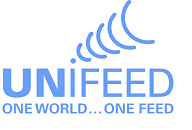Log on to the IMF Press Center
The IMF Press Center is a password-protected
site for working journalists.
Links of Interest
- Sign up here for personalized news & updates from IMF Blog, IMF Finance & Development Magazine, IMF Podcasts and more.
Events: Board Calendar
Country Info: Information by Country
WEO Data: World Economic Outlook Database
Annual Meetings: Information for Journalists
Courses: IMF Institute Learning Channel
IMF Mission Concludes Visit to Egypt for the Fourth Review under the Extended Fund Facility
November 20, 2024
World Revenue Longitudinal Database
November 20, 2024
IMF Staff Completes 2024 Article IV Mission to Republic of Korea
November 20, 2024
Opening Remarks at the 12th IMF Statistical Forum: Measuring the Implications of AI on the Economy
November 20, 2024
New Open Finance Guidelines Aim to Spur Financial Inclusion
November 20, 2024
India: Review and Evaluation of the Reserve Bank of India’s Stress Test Model Framework
November 20, 2024
This report provides a brief summary of the purpose and findings of a technical assistance (TA) mission that was intended to review and evaluate the Reserve Bank of India (RBI)’s stress test model suite, which took place in April 2023. The RBI’s model suite was found to be strong and well developed in numerous respects. The most noteworthy recommendations pertain to credit risk, market risk, and macro-financial scenario design. A detailed list of 28 recommendations spanning all areas was left with the RBI. A detailed TA report accompanies this brief summary report.
Islamic Republic of Mauritania: Technical Assistance Report-Customs Diagnostic and Needs Assessment Mission
November 20, 2024
[This report is only available in French] The mission assessed the progress of the General Directorate of Customs, identified capacity building priorities and needs, and recommended improvements in the development of core customs functions.
The Bahamas: Staff Concluding Statement of the 2024 Article IV Mission
November 19, 2024
James John
November 19, 2024











 UNifeed
UNifeed